Worried About Mold? We’re Just One Call Away.
Understanding the Difference Between Mold and Mildew
When it comes to home maintenance, many homeowners confuse mold and mildew. While they may appear similar, they are actually quite different and require different approaches for removal.
Mildew is a type of fungus that is usually white and powdery in appearance. It thrives in damp or humid environments, such as bathroom walls, shower curtains, or windowsills. Mildew can be easily cleaned with simple household products and generally doesn’t pose a major health risk.
Mold is a more dangerous fungus and can appear in various colors, including black, green, or brown. It tends to grow in areas with excess moisture, such as basements, attics, or places affected by water damage. Mold removal is more complex than mildew removal and can pose serious health risks, especially if left untreated.
One misconception about mold is that it only grows in visible, wet areas. In reality, mold can hide in places like behind walls, under carpets, and within HVAC systems. This makes it crucial to address potential mold problems immediately, even if the signs aren’t obvious.
If you suspect mold in your home, contact a professional mold remediation company. Our team has the expertise to safely identify and remove mold, protecting your home and family’s health.
Remember, understanding the difference between mold and mildew is just the first step. Acting quickly to address mold problems will safeguard your health and property.

One of the most common questions we get asked is about the black stuff that people see in their showers. It’s essential to understand that the black color around the grout lines in the shower is mold and not mildew, as some might think.
Mildew is a type of fungus, a cousin of mold, and it’s always white and powdery in appearance. On the other hand, mold can appear in different colors, including black, green, brown, and sometimes even orange. When mold is present in the house, it looks for high moisture areas to grow, and the shower is often the perfect environment for it to thrive.
Hot showers create a lot of humidity in the bathroom, and since the shower takes a long time to dry out completely, it’s a prime location for mold growth. It’s important to understand that if you see mold growing in your shower, it’s an indicator that you might have a mold problem throughout your home.
Mold spores are microscopic and can travel through the air, making it easy for them to spread throughout your house. When left untreated, mold can cause significant damage to your property and even affect your health. Exposure to mold can lead to allergic reactions, respiratory problems, and other health issues.
That’s why it’s crucial to address any mold growth in your home immediately and get a professional to take a look at it. A mold remediation specialist can determine the extent of the mold problem and provide an effective solution to eradicate it. They will also identify the source of the moisture problem and recommend ways to prevent mold growth in the future.
In conclusion, the black stuff that you see in your shower is mold, and it’s a sign that you might have a mold problem throughout your home. If you see mold growing in your shower, don’t ignore it. Call a mold remediation professional to assess the situation and provide a solution to eradicate the mold and prevent it from coming back. Your health and your home’s safety depend on it.

I can tell you that mold is a common problem in many homes. Not only is it unsightly, but it can also cause health problems, especially for people with respiratory issues like asthma or allergies. The key to preventing mold growth is to understand what causes it and how to address it.
As mentioned, mold growth is triggered by moisture issues. This can be caused by a variety of factors, including leaky pipes, poor ventilation, high humidity levels, and water damage from floods or heavy rains. In some cases, even small amounts of moisture can lead to mold growth, so it’s important to address any signs of water damage or excess moisture right away.
To prevent mold growth in your home, there are several steps you can take. First, be sure to repair any leaks or water damage as soon as possible. This will help prevent moisture from accumulating and creating the ideal conditions for mold growth. You should also ensure that your home has proper ventilation, especially in areas like bathrooms, kitchens, and laundry rooms.
In addition to these preventative measures, it’s also important to regularly inspect your home for signs of mold growth. Look for visible mold, as well as musty odors, which can be a sign of hidden mold growth. If you do find mold in your home, it’s important to address it right away to prevent it from spreading and causing further damage.
When it comes to addressing mold growth, it’s best to work with a professional mold remediation expert. These professionals have the tools and expertise needed to safely remove mold and prevent it from returning. They can also help identify the source of the moisture issues in your home and recommend solutions to address them.
In summary, mold growth is caused by moisture issues in your home. To prevent mold growth, it’s important to address any leaks or water damage right away, ensure proper ventilation, and regularly inspect your home for signs of mold growth. If you do find mold in your home, work with a professional mold remediation expert to safely and effectively remove it.
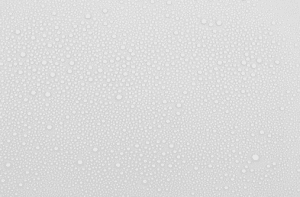
I can attest to the fact that mold spores are indeed the seeds of mold. These minuscule particles can be found virtually everywhere, including in the air we breathe. They are so small that they are invisible to the naked eye, yet they can cause significant problems if they land on wet or damp surfaces and start to grow and multiply.
Mold spores thrive in warm and humid environments, making them more prevalent in areas with poor ventilation, moisture problems, or high humidity levels. Once these spores find a suitable surface to grow on, they will begin to form a network of interconnected filaments called hyphae. These hyphae can quickly spread and form colonies of mold, which can be harmful to your health and your home.
It’s crucial to identify the early signs of mold growth and take swift action to prevent the problem from getting worse. Some common indicators of mold growth include musty odors, discoloration on walls or ceilings, and the presence of black or green spots. If you notice any of these signs, it’s essential to act fast and seek the help of a professional mold remediation expert.
Preventing mold growth is the best approach, and this can be achieved by keeping your home dry and well-ventilated. Fix any leaks or water damage immediately and ensure that your home’s humidity levels are within a healthy range. It’s also essential to clean and maintain your HVAC system regularly to prevent the buildup of mold and other allergens.
In conclusion, mold spores are the seeds of mold, and they can cause significant problems if left unchecked. If you suspect that you have a mold problem in your home, it’s essential to act quickly and seek the help of a professional mold remediation expert. With the right knowledge and preventative measures, you can keep your home healthy and free of mold.
I have seen many cases where homeowners have ignored a small spot of mold on their walls, only to discover that it’s actually a much bigger problem than they thought. The truth is that when a mold spore begins to grow, it’s almost impossible to see with the naked eye because it’s microscopic in size. By the time you notice a spot on the wall, it’s not just a single mold plant, it’s actually a whole forest of them!
If you were to take a microscope and take a closer look, you’d see that mold looks like a tiny fern tree, with thousands of them all over the place. These fern-like structures are called hyphae, and they grow very quickly. In fact, mold can start growing in as little as 24 to 48 hours if the conditions are right.
So, if you see a spot of mold on your wall, it’s important to take action immediately. Don’t make the mistake of thinking it’s just a small problem that you can deal with later. Mold can spread quickly and cause serious health problems, especially for those with allergies or respiratory problems.
If you’re not sure if the spot on your wall is mold, there are a few signs you can look for. Mold often has a musty odor, and it may appear as a discolored or fuzzy patch on the wall. If you see these signs, it’s important to take action right away.
The first step in dealing with mold is to identify the source of the problem. Mold thrives in damp and humid environments, so it’s important to address any sources of moisture in your home. This could be anything from a leaky pipe to poor ventilation in your bathroom. Once the source of the problem is identified and fixed, the mold can be removed.
It’s important to note that mold removal is not a DIY project. Mold can be dangerous to your health, and improper removal can actually make the problem worse. That’s why it’s important to call in a professional mold remediation company to handle the problem for you.
In conclusion, if you see a spot of mold on your wall, don’t ignore it. It’s important to take action immediately to prevent the problem from becoming much bigger. Look for signs of mold growth, and call in a professional mold remediation company to handle the problem for you. Remember, mold can be a serious health hazard, so don’t take any chances when it comes to your safety and well-being.
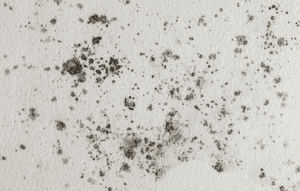
We often get asked whether air duct cleaning is necessary, especially after a mold remediation process. The short answer is that it depends on the condition of your AC system and ducts.
If you’ve had a Nano Purification process done, which is a highly effective and comprehensive mold remediation process, it’s typically not necessary to do a duct cleaning. This is because the Nano Purification process takes care of any mold or contamination present in the entire AC system, including the ductwork.
However, if your AC system and ducts were already dirty before the mold issue was discovered, it might be a good idea to get your ducts cleaned after the mold remediation process has been completed. This is because dirt and debris in your ducts can impede airflow, reduce the efficiency of your HVAC system, and negatively impact indoor air quality.
If you’re specifically trying to get your ducts cleaned to handle a mold problem, it’s highly recommended that you seek professional remediation services. While some A/C technicians may tell you that they can spray something in there to encapsulate the mold, the truth is that this is only a temporary solution. Encapsulating mold will only cover it up and prevent it from releasing spores temporarily. However, it’s only a matter of time before the mold comes right through that encapsulation layer. It’s similar to how painting over mold will only lead to it bleeding through the paint eventually.
Professional mold remediation services will not only remove the visible mold but also identify the source of the problem and fix it. Mold remediation specialists use specialized equipment to clean your ducts thoroughly and eliminate any remaining mold spores. They also use high-efficiency particulate air (HEPA) filters to capture airborne mold spores and prevent them from spreading throughout your home.
In conclusion, if you’re dealing with a mold problem in your AC system and ducts, it’s best to seek professional mold remediation services. A professional mold remediation company can provide a comprehensive solution that includes removing the mold and cleaning your ducts to ensure that your indoor air quality is restored.
Mold can be a serious problem in any home or building, and it’s natural to wonder whether the mold you have is dangerous or not. As a mold remediation expert, I can tell you that any type of mold has the potential to be harmful to human health.
Mold is a type of fungus that grows in damp, humid environments. It releases spores into the air that can cause respiratory problems and other health issues. Mold can also produce mycotoxins, which are harmful chemicals that can cause a range of health problems. While some molds are known to always produce mycotoxins, any type of mold that shows up in a test can potentially be harmful.
The infamous “black mold” is one of the most dangerous types of mold. Stachybotrys chartarum, commonly known as black mold, produces mycotoxins that can cause respiratory problems, headaches, and other health issues. If you suspect that you have black mold in your home, it’s important to contact a mold remediation expert immediately.
However, it’s important to note that not all mold is visible to the naked eye. Some types of mold can grow behind walls, under carpets, and in other hidden places. These types of mold can be just as dangerous as visible mold. If you suspect that you have mold in your home, it’s important to contact a mold remediation expert to perform a test and determine the extent of the problem.
Taking precautions to protect yourself and your family’s health is essential when dealing with mold. If you are experiencing any respiratory problems, headaches, or other health issues, it’s important to seek medical attention. In addition, it’s important to wear protective gear when cleaning up mold, including gloves, a mask, and goggles.
If you do have mold in your home, it’s important to have it removed as soon as possible. Mold remediation experts can safely and effectively remove mold from your home and prevent it from coming back. By taking action quickly, you can protect your health and prevent further damage to your home.
In conclusion, any type of mold has the potential to be harmful to human health. It’s important to take all types of mold seriously and take necessary precautions to protect yourself and your family’s health. If you suspect that you have mold in your home, don’t hesitate to contact a mold remediation expert to have it removed safely and effectively.
The speed at which mold grows depends on a variety of factors, including the type of mold, the surface it’s growing on, and the conditions of the environment. But generally, mold growth is a process that can happen in as little as a day or two.
The first stage of mold growth is spore colonization, which occurs when mold spores land on a surface that has enough moisture and organic material to support growth. Once the spores have colonized, they’ll start to spread and develop into a visible colony of mold.
The amount of time it takes for mold to grow into a visible colony can vary widely depending on the conditions of the environment. Factors such as temperature, humidity, and ventilation all play a role in how quickly mold will grow. Warmer temperatures and higher humidity levels can accelerate mold growth, while lower temperatures and drier environments can slow it down.
It’s important to note that while mold growth can happen quickly, it can also be difficult to detect. Often, by the time you notice mold growth, it has already become a significant problem. That’s why it’s crucial to be proactive in preventing mold growth by addressing moisture issues as soon as they arise.
If you do discover mold growth in your home or business, it’s essential to take action right away. Mold can cause a range of health problems, including respiratory issues, allergies, and even neurological problems in some cases. Mold remediation experts can help identify the source of the moisture problem, remove the mold safely and effectively, and help prevent future growth.
In conclusion, mold can grow at a very rapid pace, and it’s important to act quickly to address any moisture issues to prevent it from taking hold. If you suspect mold growth in your home or business, it’s always best to contact a professional for assistance. With their expertise and experience, they can help ensure that your property is safe and free from harmful mold growth
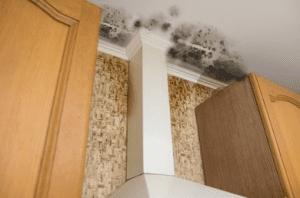
Mold is a very serious issue that should be handled with care, and attempting to clean it yourself is not recommended. There are several reasons for this, including the fact that mold is not just a surface problem but an airborne issue. When you disturb mold, it releases spores and toxins into the air, which can lead to health problems if inhaled. In addition, attempting to clean mold without proper training and equipment can actually make the problem worse by spreading it to other areas of your home.
Professionals in the mold remediation industry are trained to handle mold in a safe and effective manner. They use specialized equipment, such as commercial air purifiers, to contain and remove mold from your home. They also use containment barriers to prevent mold spores from spreading to other areas of your home.
When you attempt to clean mold yourself, you may not be using the correct cleaning solutions or techniques, which can result in the mold returning. Mold can also grow back quickly if it is not properly removed, which is why it is essential to hire a professional mold remediation expert.
In addition, mold can cause serious health problems, particularly for those with allergies or respiratory issues. Attempting to clean mold yourself can expose you to higher levels of mold spores, which can exacerbate these health problems. Professional mold remediation experts are trained to handle mold in a safe manner to minimize exposure to mold spores and toxins.
In summary, attempting to clean mold yourself is not recommended. Mold is an airborne issue that requires specialized equipment and training to properly remove. It can also pose a significant health risk if not handled correctly. Hiring a professional mold remediation expert is the best way to ensure that your home is free of mold and that you and your family are safe from its harmful effects.
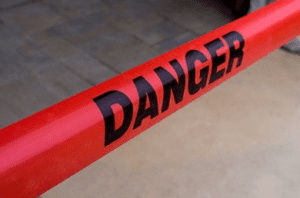
As a mold remediation experts, We often get asked the question, “Can I smell mold?” and the answer is not as simple as a yes or no. While mold does release chemicals that can have a distinct odor, not all molds produce an odor that is easily detectable.
The smell associated with mold growth is actually the result of the chemicals released by the mold, rather than the mold itself. Some of these chemicals, such as *Geosmin, are responsible for the musty smell commonly associated with mold growth. However, not all molds produce Geosmin, and some molds may release chemicals that have no discernible odor.
While the smell of mold can be a good indication that you have a mold problem in your home, it is not the only sign of mold growth. Other signs include visible mold growth, water stains, and discoloration or staining on walls or ceilings.
It’s important to address mold growth in your home as soon as possible, regardless of whether or not you can smell mold. Mold can cause health problems, especially for those with allergies or respiratory issues, and can also lead to costly structural damage if left untreated.
If you suspect that you have mold growth in your home, it’s best to contact a professional mold remediation service. They can conduct a thorough inspection of your home and provide effective solutions to address the problem. Don’t wait until the problem becomes worse; act quickly to protect your health and your home.
*Geosmin is a naturally occurring organic compound that is responsible for the earthy and musty odor often associated with the smell of mold. It is produced by certain types of bacteria and fungi, including some species of mold, and can be found in soil, water, and air. Geosmin is known to be highly sensitive to human olfactory senses, which means that even very low concentrations of it can be detected by people. In the context of mold remediation, the presence of Geosmin can be a sign of mold growth and may indicate the need for further investigation and remediation.

Mold is a common problem that many homeowners face, and it can be frustrating to deal with. You might have had mold removed from your property, but how do you know it won’t come back? As a mold remediation experts, We can tell you that the key to preventing mold from coming back is addressing the underlying cause of the problem.
When we’re called in to treat a property, we start by conducting a thorough inspection to identify any moisture issues that could be contributing to mold growth. This could include anything from a leaky roof to a plumbing problem. Once we’ve identified the root cause of the mold problem, we work with our clients to fix it completely.
It’s important to understand that mold needs moisture to grow. If we don’t fix the underlying moisture problem, the mold will just come back again. That’s why we take a comprehensive approach to mold remediation. We don’t just remove the visible mold; we also address the underlying cause of the problem to ensure that the mold won’t return.
In addition to fixing the underlying problem, we also take steps to prevent future mold growth. This might include installing better ventilation or recommending regular maintenance to prevent moisture buildup. We also educate our clients on how to prevent mold growth in the future, such as by reducing humidity levels and fixing any water leaks as soon as they’re discovered.
At our company, we’re committed to making sure that our clients have a safe and healthy living environment. That’s why we always go the extra mile to ensure that once we’ve taken care of a mold problem, it won’t come back. We understand how frustrating it can be to deal with mold, and we’re here to help. When you work with us, you can trust that we’ll get the job done right and do our best to prevent mold from coming back in the future.
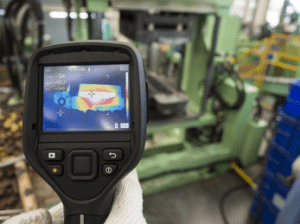
We understand the serious health risks that mold exposure can cause. Mold can have a negative impact on your health in various ways, and it’s crucial to understand the potential health risks associated with mold exposure.
One of the most concerning things is when a doctor tells you that you have mold in your blood. This indicates that mold spores have entered your body and can cause a variety of health problems. Mold can enter the body through inhalation, ingestion, or skin contact.
When mold enters the body, it can cause a range of symptoms, including respiratory problems such as coughing, wheezing, and shortness of breath. Mold can also cause skin irritation and rashes, eye irritation, headaches, fatigue, and brain fog. Prolonged exposure to mold can lead to more serious health problems, such as allergic reactions and even permanent damage to the lungs.
It’s important to note that some people are more sensitive to mold than others, and individuals with pre-existing respiratory conditions, such as asthma, are particularly vulnerable. Children, the elderly, and individuals with weakened immune systems are also at a higher risk of health problems caused by mold exposure.
To prevent health problems caused by mold exposure, it’s essential to identify and eliminate mold in your home. This involves identifying the source of the mold and addressing any moisture problems. Mold remediation experts can help you assess the extent of the mold problem and safely remove it from your home.
In conclusion, mold can have a severe impact on your health, and it’s crucial to take mold exposure seriously. If you’re concerned about mold in your home or have been told by a doctor that you have mold in your blood, it’s important to seek professional help from mold remediation experts to address the problem and prevent any further health risks.
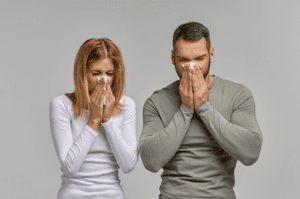
Why Mold Inspections Include Air Sampling and Swab Testing
Mold is a common problem in many homes and can lead to serious health issues if not addressed properly. A professional mold inspection is essential to identify and treat mold growth in your home. During a mold inspection, inspectors use various methods, such as air sampling and swab testing, to detect and assess mold. But why are both air and swab tests important? Let’s break it down.
Air sampling is a common method used to detect mold growth in your home. Inspectors collect air samples from different rooms and test them for mold spores. Mold spores are tiny particles that float in the air, even in areas where mold growth is not visible. Air sampling is especially useful for identifying mold in hidden areas, such as behind walls or beneath floors.
Swab testing involves taking a sample from a specific surface suspected of mold contamination. Inspectors use a swab to collect the sample and send it to a lab for analysis. This helps to determine not only whether mold is present but also the specific type of mold affecting your home.
Both air sampling and swab testing provide unique insights. Air sampling detects airborne mold spores, which may not be visible, while swab testing focuses on surface-level mold growth. Combining both methods gives the inspector a thorough understanding of the mold situation in your home.
If you suspect mold in your home, a professional mold inspector is crucial. They will use air sampling and swab testing to assess mold growth, ensuring that no mold problem goes unnoticed. By hiring an expert, you can safeguard your home and family from the risks of mold exposure.
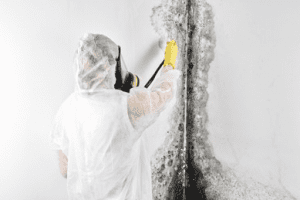
Typically, most mold inspectors charge a base price of approximately $300 for a visual inspection and basic air samples. Additional charges of around $100 per air sample may apply if needed or requested. If you would like a comprehensive report with findings and a protocol (instructions for the remediation company on how to address the issue), the cost may increase by approximately $200 – $300, based on the size of your home.
Please note that if you choose us as your remediation company, a protocol may not be required, as we treat the entire space and do not need instructions on what to remove.

Mold can be a serious issue in any home, and it’s understandable to want to take matters into your own hands by using an in-home test kit from a hardware store. However, as mold remediation experts, we must caution against relying solely on these kits to determine if you have a mold problem in your home.
One common test that people use is the petri dish test. While this test can show you that there are things growing in the air, it is not an accurate indicator of whether or not you have a mold problem. This is because mold spores are *ubiquitous and can be found in the air at any time. Another in-home test kit is an air quality test, which is more accurate than the petri dish test, but it can still give a false negative, which means you may think you don’t have a mold problem when you actually do.
There are several factors to consider when testing for mold in your home, such as whether the mold is active and sporing when the test is being done, whether the air conditioning is running during testing, whether you want to swab surfaces for landed mold spores, and whether you are in the location where the mold source is the worst. You also need to do a sample outside to act as a standard for what should be inside. If you’re not experienced in mold remediation, it can be difficult to know which factors to consider and how to interpret the results.
It’s important to remember that a mold inspector is licensed and trained in this area. They have to do continuing education classes every couple of years to keep up with anything new in the field. There’s a reason why they are required to be licensed to tell you if you have a mold issue in your home. A professional mold inspection can give you a more accurate picture of whether or not you have a mold problem and the extent of the problem.
In conclusion, while in-home mold test kits may be tempting, they may not provide an accurate representation of whether or not you have a mold problem in your home. It’s best to get a professional mold inspection to ensure that any mold issues in your home are identified and addressed promptly. For more information on the signs of a mold problem in your home, please visit the Mold University page on our website.
The answer is that it depends on your specific situation. Let’s dive deeper into this topic.
If You’re Already Aware of the Mold Problem
If you’re already aware that you have a mold problem in your home and you’ve decided to go with a mold remediation process that treats the whole house, such as Smart Nano Purification, then you won’t need to hire an inspector to come out and create a plan on how to fix the mold problem. In this case, the remediation process will take care of the mold problem without the need for an inspection.
If You’re Not Certain Whether or Not You Have a Mold Problem
If you’re not certain whether or not you have a mold problem, it’s a good idea to hire an inspector to come out and do some testing. This will help you determine if there is indeed a mold issue in your home. An inspector will use specialized equipment to test the air quality and surfaces in your home for mold spores.
If you do have a mold problem, the inspector will also provide a detailed report on the location, type, and extent of the mold growth. This report can be helpful in determining the best course of action for remediation.
If You’re Planning on Using the Traditional Tear-Out Demolition Method
If you know that you have a mold problem and you’re planning on using the traditional tear-out demolition method, then you will definitely need to hire an inspector. The inspector will create a protocol that the remediation company will follow to properly fix the mold problem.
The protocol will outline the exact steps that the remediation company needs to take to remove the mold safely and effectively. This is important because mold can spread quickly if not handled properly, leading to more damage and potentially higher costs.
Conclusion
In conclusion, whether or not you need a mold inspector before getting remediation really depends on your specific situation. If you’re already aware of the mold problem and are using a whole-house remediation process, an inspection may not be necessary. However, if you’re not certain whether or not you have a mold problem or are planning on using the traditional tear-out demolition method, hiring an inspector is a crucial step in the remediation process. We hope this guide has helped you determine whether an inspection is necessary for your situation.
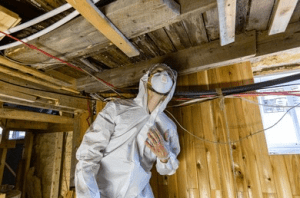
One of the most frequently asked questions we receive from our clients is whether an inspector tests after the job is done. The answer is a resounding yes. It is critical to verify the success of the remediation work and ensure that the mold situation has been completely handled.
At our company, we understand the importance of providing a safe environment for our clients, which is why we go the extra mile to bring in a third-party inspection company to test the area. These inspectors are certified professionals who specialize in mold remediation testing and are completely independent from our company.
By bringing in a third-party inspector, we can ensure that there is no conflict of interest and that the inspection results are completely unbiased. The inspector will perform a thorough examination of the area to ensure that there are no elevated mold levels in the home or office and that the air quality is up to par.
If the inspector does find elevated mold levels, we will take immediate corrective action to resolve the problem. We will not consider the job to be complete until the inspector has given us the green light.
In summary, we take the post-remediation testing process very seriously. It is our commitment to providing the highest quality of service and ensuring that our clients have a safe and healthy environment.
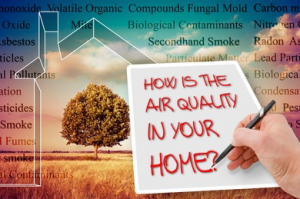
Mold can be a serious problem in homes and can pose health risks to occupants. As Mold Remediation experts, our top priority is ensuring that our clients’ homes are free of mold and safe to live in. So how can you be sure that the mold in your home is gone and it’s safe to stay there?
At Mold Experts, we have a rigorous testing process that we follow to verify that your home is free of mold. We take quality assurance samples right at the end of our treatment, as this is the best time to identify if there’s still a problem. When mold is disturbed, it sends out millions of spores to survive and grow somewhere else. If we didn’t address the mold issue, it would continue sporing, which would show up in the air quality samples.
We then send these samples to a third-party accredited lab for analysis. This is important because it ensures that the results are unbiased and accurate. Once the lab results come back, we review them, and if they look good, we have a third-party inspector come out to your home to do an inspection. The inspector also takes air quality samples and sends them to a third-party for analysis.
Once the inspector receives the samples back, if they look good, he issues a Clearance Report, indicating that there’s no longer a mold issue in your home. This report provides peace of mind to our clients that their home is safe to live in. We take this process seriously because we want to ensure that our clients are safe and healthy in their homes.
In addition to our testing process, we also provide our clients with recommendations to prevent mold growth in the future. This includes addressing any moisture issues in the home, improving ventilation, and regularly cleaning and maintaining the home.
In conclusion, at Mold Experts, we take mold remediation seriously and have a thorough testing process to verify that your home is free of mold and safe to live in. Our process involves taking quality assurance samples, sending them to a third-party accredited lab for analysis, having a third-party inspector come out to your home to do an inspection, and issuing a Clearance Report. We also provide recommendations to prevent mold growth in the future. You can rest assured that your home is now safe to live in.
Why Demolition Isn’t Always the Best Solution for Environmental Remediation
Many companies still recommend demolition over sterilization for environmental remediation because it’s the traditional method they’re familiar with. They may not be aware of newer technologies like the Smart Nano Purification Process, which offers a non-invasive, cost-effective alternative. While this process requires specialized equipment and training, it is not as widely adopted in the industry yet.
Demolition has been the standard for years in mold and environmental remediation. However, just like the early days of smartphones—once considered too complex—new technologies like Smart Nano Purification are now becoming more accessible. In the past, basic cell phones were the norm, but smartphones have now become standard, showcasing how new technology can eventually revolutionize industries.
The cost factor also plays a role in the preference for demolition. Traditional tear-out methods can be more profitable in the short term, but the Smart Nano Purification Process can be more cost-effective in the long run. While it may take more jobs to match the revenue from demolition, it provides a more sustainable solution without the need for costly rebuilding.
If you’re looking for a more efficient, non-invasive solution for environmental remediation, Smart Nano Purification offers a promising alternative. Unlike traditional methods, it eliminates the need for demolition, saving you time, money, and hassle.
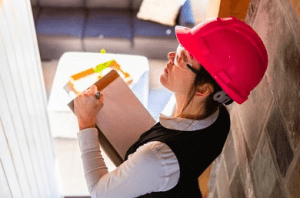
The decision between demolition-style remediation and sterilization-style remediation often depends on the extent of damage to your walls, such as in the case of a severe flood where the walls are soaked and the sheetrock is falling apart. In such cases, demolition-style remediation may be appropriate as the walls have lost their structural integrity. However, it’s important to note that sterilization-style remediation can still effectively handle mold problems in such cases and may be more cost-effective. Once the mold has been destroyed through sterilization, a standard contractor can then come in to remove and replace the drywall, which is typically less expensive than having a remediation contractor come in and remove it then having a general contractor coming in and putting it back together.

After you contact us, the first step we take is to work with you to understand the situation regarding mold. If you are certain that you have a mold problem, we will arrange for a free in-home evaluation and estimate. If you are unsure, we can schedule an appointment with one of our trusted mold inspectors to assess the situation for you.
Once you confirm the presence of mold, we will develop a comprehensive plan to address the issue. This plan will include a thorough moisture check of the property, as we understand that mold problems are often associated with moisture issues.
After identifying and addressing any moisture problems, we will work with you to come up with a plan to fix them. We will ensure that the repairs are completed to a satisfactory level.
Once the moisture issues are resolved, we will return to your property to conduct a follow-up inspection to verify that the repairs were successful in eliminating the moisture source.
If the repairs are deemed effective, we will schedule the mold treatment. After the treatment is completed, we will conduct quality assurance air samples to confirm the success of the treatment. Once we receive the results and confirm that everything looks good, we will arrange for a third-party mold inspector to conduct a final clearance check.
The third-party inspector will coordinate with you to schedule the clearance check. They will take air quality samples and send them to a lab for verification. If the results are satisfactory, the inspector will provide a clearance report indicating that the mold problem has been successfully addressed.
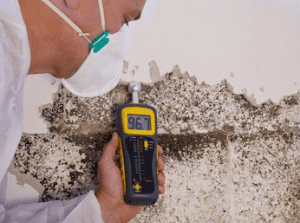
Firstly, our initial step would be to thoroughly investigate the cause behind the issue. It’s a rare occurrence, as we have encountered this problem only a handful of times across all the locations we have treated.
Upon investigation, we discovered that every instance of mold recurrence was attributed to a new leak, such as a broken pipe, a roof or skylight leak, or a malfunctioning A/C system. In such cases, we would promptly revisit the site, thoroughly assess the situation to ensure everything is in order, and take the necessary steps to address the issue and make it able to get your home mold-free once again

Frequently, individuals hear from remediation companies or inspectors that the only solution to handle a mold situation is to tear the whole place apart and take down walls. However, this is not always true. Often, mold inspectors may suggest such drastic measures because that is the only method they are familiar with, as that is what they have been taught. Similarly, remediators may recommend such approaches because that is what they are accustomed to doing.
Fortunately, there are now many inspectors who offer multiple options on their reports. They are aware that there are alternative solutions available and therefore provide the choice of different methods to address the mold issue. This allows individuals to have more flexibility in deciding how to remediate the mold problem, rather than being limited to only one approach.
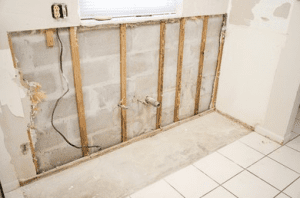
That’s an excellent question, and there are several ways to approach handling mold. Let’s explore a few options:
One method is to spray toxic chemicals on the affected spot and clean it off. However, this approach may actually spread the mold further, exacerbating the problem.
Another option is to rip out the affected area and hope that it resolves the issue without needing to remove more. However, this approach can be invasive and may not fully address the underlying problem.
A more effective solution is to use the Nano Purification Process, which eliminates the need for tearing out walls or spreading mold. This process focuses on sterilization and purification throughout the entire home, ensuring a clean and healthy environment to live in.
It’s important to consider your ultimate goal when dealing with mold. If you simply want to address a visible spot on the wall, there are multiple methods available. However, if you’re concerned about the overall health and safety of your living environment, the Nano Purification Process is designed to fully handle the mold issue, including airborne mold spores that can pose health risks. By opting for this process, you can ensure a clean, safe, and healthy living environment for you and your family.

We are frequently sought after by auto dealerships for our expertise in treating cars. Many dealerships rely on us for warranty work, especially when it comes to addressing severe mold problems that require stripping the car down to bare metal. This process can be labor-intensive and costly, involving replacement of interior components.
However, with our Nano Purification process, we can effectively tackle mold issues in a car in just about an hour. This means that dealerships no longer need to strip the car down or put their technicians at risk of working in a mold-contaminated environment. Our process eliminates the mold smell and turns visible mold into a white ash that easily brushes off. After our treatment, the car simply needs to be sent for detailing before returning it to the owner.
Not only do auto dealerships benefit from our services, but classic car owners also appreciate our process. Working on classic cars can be expensive, and dealing with mold issues can be time-consuming and extensive. Our solution provides a convenient and efficient way to handle mold problems in classic cars, making it a preferred option for car owners.

Certainly. We often receive referrals from other yacht captions due to the excellent results of our process. It’s particularly well-suited for working on yachts and large boats due to their enclosed nature, which allows for highly effective treatment. Unlike houses, boats are typically airtight, making our process highly efficient.
We understand that captains may have concerns about potential damage to wood trim, access to engine rooms, and furniture. Rest assured, our process is safe for all materials and can reach all areas, including engine rooms, without causing any harm.

Smart Nano Purification: Effectively Eliminate Mold Odors and More
The Smart Nano Purification Process is an advanced solution designed to eliminate mold-related odors and the harmful mycotoxins behind them. These mycotoxins are toxins released by mold as it breaks down the materials it grows on. By targeting the mold and neutralizing these toxins, our process not only removes the mold but also eliminates the associated health risks for both humans and animals.
In addition to removing mold odors, the Smart Nano Purification process is highly effective in addressing odors caused by other sources, such as leaks and water damage. In many cases, our process successfully eliminates these odors, ensuring a fresh-smelling space. However, while the process has a high success rate, there may be rare instances where odors unrelated to mold or other materials persist, and our process may or may not resolve them.
The Smart Nano Purification Process is also effective in neutralizing odors from pets and smoking. With its cutting-edge technology, it can freshen your home by eliminating unwanted smells, creating a clean and pleasant environment.
With our cutting-edge Smart Nano Purification technology, we have successfully treated a wide range of spaces, including hospitals, government facilities, yachts, cars, planes, and residential homes. No matter what you need purified, we’ve likely worked on it and treated it. Plus, our solution is fully EPA certified for use in any type of environment and on various surfaces, making it suitable for virtually any location.

The Nano Purification process employs only the highest quality, non-toxic chemicals that are approved for use in the medical industry and certified by the EPA to be non-toxic. While these chemicals may be expensive, they ensure that the purification process is safe and environmentally friendly.
One of the key advantages of Nano Purification is its ability to reach even the tiniest crevices, thanks to the minute size of the particles used. These particles are much smaller than mold spores, allowing them to penetrate walls. When the Smart Nano Purification is used, the liquid is transformed into microscopic droplets that are equivalent to a gas. In fact, if you were to place your hand in front of the Nano Purifier machine, it would remain dry as the particles are so small that they do not physically stick to surfaces, eliminating the need for wiping or leaving behind any residues.
On the other hand, fogging, which uses larger particles that are about 10 to 15 times the size of mold spores, relies on toxic chemicals called fungicides. Due to their larger size, these droplets of water can only cling to mold spores in the air, causing them to fall to the ground. However, they are not able to reach the nooks and crannies where mold can hide, and therefore cannot effectively eliminate mold growth. In addition, the mold spores may resurface again once the fogging treatment wears off, resulting in temporary relief but not addressing the root cause of the mold problem.
It is worth noting that fogging is not considered effective for handling mold problems, as it merely pulls down mold spores from the air to the ground without addressing the underlying issue. In contrast, Nano Purification ensures thorough and long-lasting purification without leaving any residues or harmful effects, making it a superior choice for safe and effective mold remediation.

Smart Nano purification is a process of being able to take products and break them down to a microscopic particle. That’s a fraction of the size of a mold spore, bacteria or a virus in order to get it to be able to spread it throughout a home and have it penetrate through all the materials and completely destroy all the molds, bacteria and viruses in the home.
The best analogy between nano purification and anything else would be getting a house tented for termites. They are working with a gas and as tiny, microscopic particle, they don’t have to rip the walls open to get to the termites.
Nano purification is a cutting-edge process that involves breaking down products into microscopic particles, much smaller than mold spores, bacteria, or viruses. These particles are then dispersed throughout a home, penetrating all materials to effectively eradicate mold, bacteria, and viruses.
An *apt analogy to understand nano purification is tenting a house for termites, where a gas is used to reach the pests without having to tear down walls. Similarly, nano purification works without the need for toxic chemicals or home tenting, as the tiny particles can quickly and efficiently eliminate mold, viruses, and bacteria. These particles, at the size of a gas, easily penetrate through various materials in the home, making the process highly effective and efficient.
*The word “apt” is an adjective that is used to describe something as appropriate, fitting, or suitable for a particular purpose or circumstance. It can also refer to someone who is skilled or inclined to do something well.

The chemicals utilized in Nano purification are a blend of hydrogen peroxide and acetic acid, which is similar to the acid found in lemons and oranges but in a more potent form. These chemicals are uncomplicated and do not contain any harmful substances like bleach. Moreover, they are completely non-toxic and safe to use.

With the Nano purification process, minimal preparation is needed. There is no need to worry about covering furniture, clothing, paintings, or any other belongings. Your food and other household items are safe within the home and do not require any special precautions or covering.
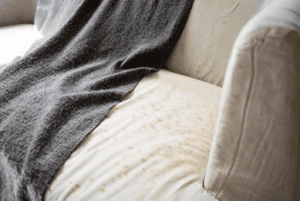
The Nano purification products we offer are entirely safe for animals. In fact, we have successfully used them in veterinarian hospitals. Our product has received certification from the Environmental Protection Agency (EPA) for being safe for both pets and families.

The Nano purification process is a simple and reliable method that is absolutely safe for food, food surfaces, and all areas within a restaurant. Our products are fully EPA certified, guaranteeing their non-toxicity. One of the greatest benefits of this process is its ability to effectively handle mold, sterilize surfaces, and eliminate the need for extensive post-treatment wiping, as it leaves no residue behind.
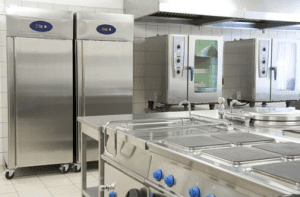
In order to provide an accurate quote for the Nano purification process, we conduct a comprehensive in-person estimate. During this process, we gather essential data to ensure an accurate estimation, which includes:
Additionally, during our visit, we conduct a thorough inspection of the property to determine the root cause of the mold issue. This enables us to address it effectively and appropriately.
In our pricing estimate, we also include the cost of engaging a third-party Mold Inspection Company to conduct testing upon completion of our work. Our aim is to provide a transparent and all-inclusive estimate, so that there are no unexpected charges when you receive the final invoice.

The Nano purification process is incredibly swift, taking just over three hours from start to finish. Once the setup is complete and the treatment is running, the actual process time is only two hours. Afterward, there is an additional hour for the home to air out, making it a total of approximately four hours before you can return home.
If you find that the smell is still a bit too potent when you return, simply allow it an additional hour to dissipate. It’s important to note that the solution used in the process is non-toxic and safe for you, though it may be strong on the eyes at full strength. The intensity of the smell depends on your sensitivity, so if it feels overwhelming, just give it more time to subside.

Our Nano purification process employs products that are EPA certified for use in both homes and businesses, with a 100% certification rate. These products are safe to use on all types of surfaces. If you require documentation for your HR department or any other purposes, we can readily provide it upon request. It’s important to note that all our documentation is considered public records.

People often wonder how we can treat the inside of walls without actually opening them up. The secret lies in the size of the particles we use. The magic behind our process is that we work with particles that are incredibly small, even smaller than mold spores.
Now, let’s flip the question around and consider how mold spores actually get inside walls in the first place. Mold spores are microscopic particles that are so tiny, you can fit billions of them on the head of a pin. Due to their small size, they are able to pass through porous materials like sheetrock, wood, and other building materials, which is how they end up inside walls.
Our nano purification process takes our solution and converts it into particles that are 10 times smaller than the size of mold spores. This means that just like mold spores can penetrate walls, our solution can also reach inside walls to destroy mold. It’s a highly scientific process that involves working with particles that are minute in size.
To put it in perspective, a nanometer is 1000 times smaller than a micrometer, which is the unit of measurement for micro-sized particles. So our nanoparticles are incredibly small and allow us to effectively treat mold inside walls without having to open them up.

The nano purification process surpasses other methods in terms of speed and simplicity. Unlike other processes such as fogging, which only targets the air, our nano purification process can penetrate through materials, including walls, to effectively eliminate mold. This means we can tackle the entire mold problem, not just spot-treatments on walls. With our process, we guarantee 100% results as we are able to address 100% of the mold issue, providing a comprehensive solution to mold remediation.
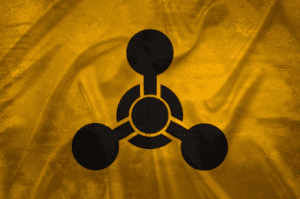
Here’s a revised version of your text that’s SEO-friendly and easier to read:
Why Our Mold Remediation Guarantee Sets Us Apart
Many mold remediation companies cannot offer the same guarantee as we do because they typically only treat specific areas of the home. This limited approach often leaves underlying issues unresolved. To offer a similar guarantee, they would need to continually tear out parts of the home until it passes an air quality test, potentially losing money without charging the customer extra.
In contrast, our guarantee covers the entire property. If a customer’s home doesn’t pass an air quality test performed by a third-party mold inspector, we will investigate the issue and re-treat the property at no additional cost. This ensures that your home remains mold-free and safe for your family.
We understand that our customers value a healthy living environment, which is why they trust us with their mold remediation needs. We don’t just aim to fix part of the problem – we provide a thorough, complete solution. Our guarantee ensures that every issue is addressed and that your home is mold-free.

We assure you that we are committed to effectively addressing any mold problem you may have. Our process includes engaging a reputable mold inspection company to conduct thorough testing of your property after each treatment, ensuring that the issue is fully resolved. We stand by our guarantee, which is based on the air quality assessment carried out by a third-party inspection company. This provides you with the confidence of a comprehensive solution.
In the unlikely event that the third-party inspection does not pass, we will promptly revisit your property to identify and rectify any remaining concerns. Our team is highly skilled in identifying moisture sources, but sometimes hidden issues may arise. If we are unable to identify the problem, we may request the assistance of a leak detection company to pinpoint the source of moisture. Once the moisture issue is resolved, we will re-treat your home at no additional cost.
Please note that we consider the job to be complete only when we receive a passing air quality assessment from a reputable third-party inspection company. Your satisfaction and the health of your home are our top priorities.

Absolutely! We possess a complete license and insurance coverage. If you require any documentation to verify this, please do not hesitate to contact us. We are more than willing to provide you with the necessary information.
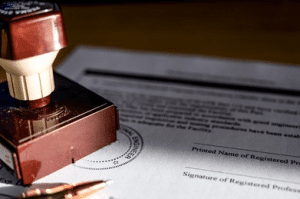
Due to our efficient mold treatment process, we are able to promptly address mold issues and provide fast solutions to our customers. We understand that living with mold is undesirable, and we strive to minimize the time our customers have to endure it. However, in some cases where there are ongoing leaks or moisture issues in the home, additional time may be required to fix and dry up these issues before treatment can commence. This may result in a slight delay of a week or two for the overall project timeline. Nevertheless, if the house is ready for treatment, we can typically schedule it within the week.

Our team boasts extensive expertise accumulated over a decade of experience. With a wealth of practical knowledge gained from working on countless properties, including hospitals, vehicles, yachts, as well as various sizes of houses, we have successfully handled diverse situations with precision and professionalism. Our track record includes thousands of properties treated and managed, showcasing our unparalleled depth of experience.

Please feel free to visit our website and browse through the numerous testimonials from satisfied customers. Due to privacy laws similar to those in the medical industry, we are unable to provide direct references from past clients in the mold industry. We deeply respect our clients’ privacy preferences, and if they do not wish to have their information disclosed, we cannot release it. Just as we would honor your privacy, we uphold the same level of confidentiality for all our clients. However, we do encourage our clients to leave reviews if they are comfortable sharing their experience with others and are okay with disclosing that they had a mold problem.

Certainly! Occasionally, there is a need to accommodate business requirements, particularly in the case of commercial enterprises. We acknowledge the necessity of keeping the doors open during business hours, and as such, we are willing to collaborate with you on scheduling arrangements.

Expediting Your Mold Remediation While You Wait for Insurance Approval
Insurance claims can take anywhere from a few weeks to several months to process fully. However, when it comes to your mold situation, you don’t have to wait for the entire claim to be completed.
Our main priority is ensuring your claim gets approved, which typically takes a few days to a few weeks. Once your claim is approved, we’ll act quickly to begin addressing your mold issue, ensuring minimal disruption to your life.
We understand the urgency of mold problems, and we strive to move the process forward as quickly as possible. Once your claim is approved, we’ll expedite the necessary steps to remediate the mold in your home, so you can focus on what matters most.

Certainly, insurance is a common part of our routine.
Insurance typically covers mold problems that arise from incidents such as leaks in walls, roof leaks, or A/C pan leaks. However, if the issue is a result of inadequate maintenance on your part, insurance may not cover it.
Feel free to contact us if you have any questions, and we’ll be happy to provide guidance and assistance.

Determining whether your mold problem is covered by your insurance policy is not a simple Yes or No answer. It depends on the cause of the mold issue and the specific coverage of your policy.
To ensure that you receive proper guidance, we highly recommend working with a professional who specializes in handling mold-related insurance claims, such as a Public Adjuster. We keep a list of trusted Public Adjusters on hand because we understand that some insurance companies may try to avoid honoring claims or providing adequate coverage for mold issues.
You can also reach out to us for assistance, as we have a basic understanding of what is typically covered and what is not. Our goal is to ensure that your claim is processed smoothly and quickly, and that you are satisfied with the outcome. Contact us for help and we will be happy to connect you with a reputable Public Adjuster to assist you further.

Efficient Mold Remediation for Real Estate Transactions
Real estate agents often turn to us for help with mold issues that can jeopardize the sale of a home. Traditionally, mold remediation can be time-consuming and expensive, leading to lost deals. However, our efficient process typically takes just half a day to complete, ensuring a quick resolution.
Our streamlined approach allows for fast mold remediation, making it easier to close deals on time. In many cases, the cost of our services can be covered through escrow, relieving sellers from paying upfront. Once the sale is finalized, we promptly handle the mold issue and process the payment through escrow.

The most comprehensive form of documentation to ensure complete resolution of a mold issue is to engage a third-party mold inspector who conducts thorough testing of the premises. We prioritize this step in every job we undertake to ensure the well-being of everyone involved. By obtaining comprehensive documentation, we aim to provide you with the necessary evidence for any future reference, should any mold-related concerns arise regarding the building in question.

Proper containment is critical when doing mold remediation to prevent the spread of mold spores to unaffected areas of the property. Here are the steps to set up proper containment during mold remediation:
By following these steps, you can set up proper containment during mold remediation to prevent the spread of mold spores and ensure that the remediation is effective.
Mycotoxins are a group of natural toxins produced by certain types of fungi, including molds, that can grow on a variety of crops, foods, and surfaces. These toxic substances can contaminate food, feed, and the environment, leading to a range of harmful effects on human and animal health.
One of the most common effects of mycotoxin exposure is kidney toxicity. Nephrotoxicity occurs when the kidneys are exposed to a drug or toxin that damages their cells and tissues, affecting their ability to function properly. Mycotoxins can also cause immune suppression, which weakens the body’s defenses against infections and diseases. This can lead to a variety of health problems, such as increased susceptibility to infections, chronic inflammation, and autoimmune disorders.
Cognitive dysfunction is another potential effect of mycotoxin exposure, particularly for those who are chronically exposed. Mycotoxins have been shown to affect brain function, causing deficits in attention, memory, and learning, and impairing visual and auditory processing, problem-solving, and motor skills. Neurotoxicity is also a concern, as mycotoxins can interfere with the normal activity of the nervous system, leading to disruptions in nerve signaling and cell death.
Mycotoxins have also been linked to several chronic diseases, including cancer. Exposure to certain types of mycotoxins, such as aflatoxin, has been associated with an increased risk of liver cancer, while other mycotoxins have been linked to breast and gastric cancer. Acute pulmonary hemorrhage is another rare but serious effect of mycotoxin exposure, causing bleeding into the lungs that can affect people of all ages.
In addition, mycotoxins have been linked to aplastic anemia, a rare condition that occurs when the body doesn’t produce enough new blood cells, leading to fatigue, increased susceptibility to infections, and uncontrolled bleeding. Birth defects are also a concern, as mycotoxins can cross the placenta and affect fetal development, leading to structural changes that can affect almost any part of the body, including the heart, brain, and limbs.
Given the potential harmful effects of mycotoxin exposure, it is important to minimize exposure through proper food storage and handling, mold prevention and control, and proper cleaning and maintenance of indoor environments. Regular monitoring and testing of food and environmental samples can also help identify potential sources of mycotoxin contamination and prevent their harmful effects on human and animal health.
Air scrubbers are an important tool in mold remediation, as they can help to capture and remove airborne mold spores that can spread throughout a building and potentially cause health problems.
To use air scrubbers in mold remediation, follow these steps:
By using air scrubbers in mold remediation, you can effectively capture and remove airborne mold spores, helping to prevent the spread of mold and protect the health of building occupants.
Air scrubbers are air filtration devices designed to remove particles and other harmful substances from the air. They are commonly used in a variety of settings, including commercial, industrial, and residential environments, to improve air quality and protect occupants from airborne pollutants.
Air scrubbers work by drawing air through a series of filters that capture particles and other harmful substances, such as mold spores, dust, bacteria, and chemicals. The filtered air is then circulated back into the environment, providing clean and fresh air for occupants.
Air scrubbers are particularly useful in settings where there is a high risk of airborne contamination, such as construction sites, hospitals, and laboratories. They are also used during mold remediation to capture airborne mold spores and prevent them from spreading to other areas of the building.
Overall, air scrubbers are an effective and efficient way to improve air quality and protect occupants from the harmful effects of airborne pollutants.
1. Musty Odor:
The distinct musty smell that mold emits is a common sign of its presence in your home. You may become accustomed to the scent, but others may notice it, and it should not be ignored.
2. Visible Mold Growth:
If you observe brown, black, green, or tan spots on walls, bathroom ceilings, around AC vents, on furniture, clothing, leather shoes or handbags, it could be a sign of mold growth.
3. Water Stains:
The presence of water stains from previous leaks or water sources, even if no visible mold is present, indicates that there could be mold growth concealed behind walls, ceilings, or cabinets, as mold thrives in dark, undisturbed locations.
4. Shower:
Mold can grow in damp locations, and your shower is one of those places. Dark spots in and around the shower may indicate mold growth, which could pose a problem in your home.
5. Spoiled Food:
If you are throwing away food that has mold on it more often than usual, even food that was bought just a few days ago, this could be a sign of a mold issue. Mold thrives on organic materials, and the insides of cabinets are perfect for it to grow in.
6. Reduced Immune System:
A mold problem in your home can lower your and your family’s immunity, causing frequent colds, flu, or other illnesses. The toxins released by mold growth can have a harmful effect on the immune system over time, leading to health issues.
It’s crucial to note that just because you don’t see any visible signs of mold doesn’t mean it’s not present in your home.
Consulting a mold inspector is the next step in determining if you have a mold issue.
Additionally, experiencing symptoms like a stuffy nose, sore throat, coughing, burning eyes, or skin rash could indicate a mold problem, especially if you or your family members have asthma or allergies.
Mold can grow anywhere moisture is present, but it favors dark, undisturbed areas, such as inside walls, but can also grow in showers, AC vents, shoes, clothing, and furniture.
Mold is a common problem in many homes, and it can be both unsightly and harmful to your health. Mold spores can cause a range of health issues, from allergies to respiratory problems, so it’s important to take steps to reduce the presence of mold in your home. One way to do this is by using a MERV filter in your HVAC system. In this article, we’ll discuss MERV filter ratings related to mold in your home.
What is a MERV filter?
MERV stands for Minimum Efficiency Reporting Value, and it’s a rating system that measures how well an air filter can remove particles from the air. The MERV rating system ranges from 1 to 20, with higher numbers indicating a higher level of filtration efficiency.
How do MERV filters relate to mold?
Mold spores are a common airborne allergen that can be present in your home’s air. A MERV filter with a higher rating can capture smaller particles, including mold spores, and prevent them from circulating in your home’s air. A MERV filter with a rating of 8 or higher is recommended for reducing the presence of mold spores in your home.
It’s important to note that while a higher MERV rating can be effective at capturing mold spores, it’s not a complete solution. Proper ventilation and humidity control are also important factors in reducing the presence of mold in your home.
Choosing the right MERV filter
When choosing a MERV filter for your HVAC system, it’s important to consider your specific needs. If you have a family member with allergies or respiratory issues, a higher MERV rating may be necessary to ensure the air is as clean as possible. However, a filter with too high of a rating could also put too much strain on your HVAC system and reduce its efficiency. It’s important to consult with a professional HVAC technician to determine the best MERV rating for your home and HVAC system.
Conclusion
Mold can be a serious problem in your home, but using a MERV filter in your HVAC system can help reduce its presence in the air. When choosing a MERV filter, consider your specific needs and consult with a professional to determine the best rating for your home. Remember that a MERV filter is just one part of a comprehensive approach to reducing mold in your home, which also includes proper ventilation and humidity control.
If you’re looking for ways to improve the air quality in your home or workplace, you may have heard of MERV filters. MERV stands for Minimum Efficiency Reporting Value, which is a rating system that measures the effectiveness of air filters. The MERV rating system ranges from 1 to 20, with higher numbers indicating a higher level of filtration efficiency. In this article, we’ll break down the different MERV filter numbers and what each number filters out with micron sizes.
MERV 1-4
Filters in the MERV 1-4 range are the lowest-rated filters and are generally used in residential settings. They are able to filter out larger particles such as dust mites, pollen, and pet dander, but they are not effective at capturing smaller particles. MERV 1-4 filters have a particle capture range of 10 microns or larger.
MERV 5-8
Filters in the MERV 5-8 range are able to capture smaller particles than MERV 1-4 filters, making them more effective at improving air quality. They are able to capture particles such as mold spores, hair spray, and cement dust. MERV 5-8 filters have a particle capture range of 3 to 10 microns.
MERV 9-12
Filters in the MERV 9-12 range are able to capture even smaller particles, including lead dust, humidifier dust, and Legionella bacteria. They are often used in commercial settings such as hospitals and laboratories. MERV 9-12 filters have a particle capture range of 1 to 3 microns.
MERV 13-16
Filters in the MERV 13-16 range are the highest-rated filters and are typically used in commercial and industrial settings. They are able to capture particles as small as bacteria and tobacco smoke, making them highly effective at improving indoor air quality. MERV 13-16 filters have a particle capture range of 0.3 to 1 micron.
It’s important to note that while a higher MERV rating can be effective at capturing smaller particles, it’s not always necessary or practical. Filters with higher MERV ratings can put more
In the past, getting rid of furniture with mold was a common practice since it was challenging to remove the roots entirely, making it unsafe to have in your home.
It is important to note that attempting to clean mold using steam cleaning methods is not effective since it cannot reach the roots. Moreover, making the furniture damp can further facilitate the growth of mold. Disturbing the mold can also cause it to release spores into the air, which can worsen the air quality in your home and lead to respiratory issues.
However, with the advancements in technology, the Smart Nano Purification process provides an effective solution to remediate mold growth on furniture. This process effectively removes mold roots, making the furniture safe to use once again. For more information on this innovative mold remediation technique, please visit our website.
Although it’s a fact that mold exists naturally in the environment, it’s important to distinguish between mold found outside and mold growing inside your home. Mold growth indoors can lead to health issues, such as elevated levels of mold spores and toxins that can cause problems for people with allergies or weakened immune systems. Therefore, it’s crucial to identify and address any mold growth in your home to prevent health problems and structural damage. In contrast, exposure to a few mold spores that may have entered your home through an open door or window is not typically a cause for concern, as your immune system can generally handle this type of exposure.
Bleach is effective at killing mold on non-porous surfaces such as glass and stainless steel. However, building materials such as sheetrock, wood, and cement are porous, and bleach cannot penetrate to the roots of the fungus. Instead of killing the mold, bleach can stimulate the mold to release spores, which can worsen the problem.
Many clients have reported that mold continues to grow in their A/C vents even after cleaning with bleach or similar chemicals. This is because most cleaners are only effective on non-porous surfaces.
It is a factual statement that traditional fogging, also known as wet fogging, is not an effective solution for mold remediation. This method merely pulls mold spores out of the air and deposits them on surfaces without penetrating them. In essence, it is comparable to using a spray bottle. Unfortunately, within a couple of days, mold spores will begin to reappear, and remediation company also refer to this method as a Microbial wipe-down method.
The confusion often arises from the distinction between traditional fogging and dry fogging. With dry fogging, smaller particles are used, and the process does not make surfaces wet, although it may make them damp. This method is useful for handling mold issues in homes since it can penetrate through walls and reach concealed areas.
Two steps beyond traditional fogging is Nano Purifying, where nothing gets wet or damp. The liquid is instantly transformed into a gas, thanks to specialized equipment designed and customized for the process. As a result, Nano Purifying is a highly effective technique for eliminating mold spores, bacteria, and viruses from indoor environments without leaving any residue or moisture behind.
Consequently, it is considered a superior alternative to traditional fogging methods.
Mold is a common problem that can affect any home or building. One particular type of mold that has gained attention in recent years is Ulocladium. This mold is often found in wet or damp environments and can cause health problems for those who are exposed to it. In this article, we will take a closer look at Ulocladium, including what it is, where it is commonly found, its health effects, and how to prevent its growth.
Ulocladium is a type of mold that is commonly found in wet or damp environments. It is a dark-colored mold that typically appears black or greenish-black in color. Ulocladium is a filamentous fungus, which means that it forms long, branching filaments that can grow together to form a colony. This mold is common in soil, water, and decaying plant material.
Ulocladium can be found in a variety of different environments, but it is most commonly found in wet or damp areas. This mold can be found in basements, bathrooms, kitchens, and other areas of the home that are prone to moisture. It can also be found in outdoor environments, such as in soil and on decaying plant material.
Exposure to Ulocladium can cause a variety of health problems. The most common health effects of Ulocladium exposure include respiratory problems, such as asthma and allergies. Ulocladium can also cause skin irritation and eye irritation. In some cases, exposure to Ulocladium can lead to infections, particularly in individuals with weakened immune systems.
Preventing the growth of Ulocladium is essential to maintaining a healthy home or building. The best way to prevent the growth of this mold is to control moisture levels in the environment. This can be achieved by repairing any leaks or water damage, using exhaust fans in bathrooms and kitchens, and ensuring that the home is properly ventilated.
If you do notice Ulocladium growth in your home, it is important to take immediate action to remove it. This can be done by hiring a professional mold remediation company, who will use specialized equipment and techniques to safely remove the mold from your home.
In conclusion, Ulocladium is a common type of mold that can cause health problems for those who are exposed to it. It is important to prevent the growth of this mold by controlling moisture levels in the environment and taking immediate action to remove any mold that is present. If you are concerned about Ulocladium growth in your home, it is recommended that you seek the advice of a professional mold remediation company.
Torula mold, also known as Torula yeast, is a type of fungus that belongs to the family of yeasts known as Candida. It is commonly found in soil, water, and various organic materials, such as decaying plants, wood, and food waste.
This mold is unique in that it can grow under a wide range of conditions, including high temperatures, high salt concentrations, and acidic environments. Torula mold can also tolerate low levels of oxygen and low moisture levels, which makes it a hardy microorganism capable of surviving in a variety of habitats.
The Torula mold is used in many industrial applications, including the production of food additives, enzymes, and biofuels. It is also used in the manufacturing of flavors and fragrances, as well as in the production of animal feed.
One of the most significant applications of Torula mold is in the production of the food additive MSG (monosodium glutamate). MSG is a flavor enhancer commonly used in processed foods to enhance their taste. Torula yeast is an excellent source of glutamic acid, which is the primary component of MSG. It is a natural way to produce this flavor enhancer, as opposed to the synthetic processes used in the past.
Torula mold is also used in the production of enzymes, which are used in a wide range of industrial processes, including food processing, textile production, and the production of biofuels. The enzymes produced by Torula mold are capable of breaking down a variety of organic materials, making it an important player in the field of biotechnology.
In addition to its industrial applications, Torula mold is also used as a nutritional supplement for animals. It is a rich source of protein, essential amino acids, and vitamins, making it an excellent addition to animal feed.
However, Torula mold can also cause health problems in humans. It can produce allergens that can trigger allergic reactions, especially in people who are sensitive to molds. Some studies have also linked exposure to Torula mold to respiratory problems and other health issues.
To reduce the risk of exposure to Torula mold, it is essential to maintain good hygiene practices, especially in areas where organic materials are present. It is also important to ensure that food is properly stored and disposed of, to prevent the growth of mold and other microorganisms.
In conclusion, Torula mold is a versatile microorganism with a wide range of industrial and nutritional applications. While it is generally safe, it can cause health problems in some people. By practicing good hygiene and food safety practices, we can minimize the risk of exposure to Torula mold and reap the benefits of its many uses.
Penicillium and Aspergillus are two of the most common types of molds found in nature. These molds play a vital role in the ecosystem by breaking down organic matter and recycling nutrients back into the soil. However, they can also pose a health risk to humans and animals when they grow indoors.
Penicillium is a genus of molds that includes over 300 species. This mold is commonly found in soil, decaying organic matter, and various foods, including bread, cheese, and fruits. The most famous member of this genus is Penicillium notatum, which produces the antibiotic penicillin. This mold was discovered in 1928 by Scottish scientist Alexander Fleming, and it revolutionized medicine by providing a way to fight bacterial infections.
While Penicillium can be beneficial, it can also cause health problems when it grows indoors. When inhaled, Penicillium spores can cause allergic reactions, such as hay fever, asthma, and other respiratory problems. People with weakened immune systems, such as those undergoing chemotherapy or with HIV/AIDS, are particularly vulnerable to infections caused by Penicillium.
Aspergillus is another genus of molds that includes over 200 species. This mold is commonly found in soil, decaying plant matter, and indoor environments, such as homes and buildings. Aspergillus can grow on a variety of surfaces, including walls, ceilings, and carpets, and it can produce a musty odor.
Like Penicillium, Aspergillus can cause health problems when it grows indoors. When inhaled, Aspergillus spores can cause a variety of allergic reactions, ranging from mild to severe. In some cases, Aspergillus can also cause infections, particularly in people with weakened immune systems.
Preventing mold growth indoors is essential for maintaining a healthy environment. The most effective way to prevent mold growth is to control moisture levels in the home. This can be done by fixing leaks, drying out wet areas, and using a dehumidifier in humid environments. Regular cleaning and proper ventilation can also help prevent mold growth.
If you suspect that you have mold in your home, it is essential to have it professionally removed. Attempting to remove mold yourself can be dangerous, as it can release spores into the air and spread the mold to other areas of the home. A professional mold remediation company can safely remove the mold and ensure that it does not return.
In conclusion, Penicillium and Aspergillus are two common types of molds found in nature. While these molds play a vital role in the ecosystem, they can also cause health problems when they grow indoors. Preventing mold growth by controlling moisture levels and promptly addressing leaks and water damage is essential for maintaining a healthy home environment. If you suspect that you have mold in your home, it is essential to have it professionally removed to ensure the safety of yourself and your family.
Paecilomyces is a type of mold that belongs to the family of fungi known as Ascomycota. It is a widespread mold that is commonly found in soil, decaying plant matter, and air. There are over 200 different species of Paecilomyces, and many of them have been used in various industries, such as agriculture and medicine.
One of the most well-known species of Paecilomyces is Paecilomyces lilacinus, which is a soil-borne fungus. This mold is commonly used as a biological control agent in agriculture to control plant-parasitic nematodes. It has also been shown to have potential as a biocontrol agent for insect pests and as a source of enzymes for industrial use.
Another species of Paecilomyces that is commonly used in medicine is Paecilomyces variotii. This mold has been found to produce an antifungal compound known as variotin, which has potential as a new antifungal drug.
Paecilomyces can cause infections in humans and animals, particularly in people with weakened immune systems. The mold can cause a range of infections, including sinusitis, keratitis, and invasive infections. Invasive infections are rare but can be serious and potentially life-threatening.
Symptoms of Paecilomyces infection can vary depending on the site of infection, but can include fever, cough, shortness of breath, chest pain, and eye pain. Diagnosis of Paecilomyces infection can be challenging, as the mold is often resistant to antifungal drugs and may require special laboratory testing to identify.
Prevention of Paecilomyces infection involves avoiding exposure to the mold, particularly in high-risk environments such as hospitals and agricultural settings. Good hygiene practices and regular cleaning can also help to reduce the risk of infection.
In conclusion, Paecilomyces is a common and diverse mold that has potential uses in various industries, including agriculture and medicine. However, it can also cause infections in humans and animals, particularly in people with weakened immune systems. Prevention of Paecilomyces infection involves avoiding exposure to the mold and maintaining good hygiene practices.
Mold is a common household problem that can pose serious health risks if not addressed properly. One type of mold that people should be aware of is Memnoniella. This mold is often mistaken for its cousin, Stachybotrys, which is also commonly known as “black mold”. In this article, we will discuss what Memnoniella is, where it is found, its health effects, and how to prevent its growth.
Memnoniella is a genus of mold that belongs to the same family as Stachybotrys. It is a type of fungi that grows in damp, dark environments and can produce spores that can cause health problems when inhaled. Memnoniella can have a greenish-black appearance, similar to Stachybotrys, and is often mistaken for it. However, Memnoniella is typically less toxic than Stachybotrys, but it can still cause health issues if it is present in large quantities.
Memnoniella is often found in damp and humid areas, such as bathrooms, kitchens, basements, and crawl spaces. It can grow on a variety of surfaces, including wood, wallpaper, carpet, and insulation. Memnoniella can also grow on food items, particularly fruits and vegetables, and can produce mycotoxins that can cause illness if consumed.
The health effects of Memnoniella exposure can vary depending on the individual’s sensitivity to the mold and the amount of exposure. Like other molds, Memnoniella can cause allergic reactions, such as sneezing, runny nose, and itchy eyes. It can also cause respiratory problems, such as coughing, wheezing, and asthma attacks, particularly in people with pre-existing respiratory conditions.
Long-term exposure to Memnoniella can also cause more serious health problems. For example, it can cause chronic fatigue, headaches, memory loss, and mood swings. In rare cases, it can cause severe health problems, such as neurological damage, pulmonary hemorrhage, and even death. People with weakened immune systems, such as the elderly, infants, and individuals with chronic health conditions, are more susceptible to the adverse health effects of Memnoniella exposure.
Preventing Memnoniella growth is key to avoiding its adverse health effects. Here are some steps you can take to prevent mold growth in your home:
Conclusion
In summary, Memnoniella is a type of mold that can cause health problems if it is not addressed properly. It is often found in damp and humid environments and can grow on a variety of surfaces. While it is less toxic than Stachybotrys, it can still cause respiratory problems and other health issues. Preventing Memnoniella growth is key to avoiding its adverse health effects. By controlling humidity levels, ventilating, fixing leaks, cleaning and drying surfaces, and monitoring indoor air quality, you can prevent mold growth in your home and protect your health.
Epicoccum is a genus of fungi that belongs to the phylum Ascomycota. It is a widespread genus and has been found in a variety of environments, including soil, decaying plant matter, and stored grains. The most common species of Epicoccum is Epicoccum nigrum, which has been found all over the world.
Epicoccum is a common mold that is often found in indoor and outdoor environments. It can grow on a variety of surfaces, including walls, ceilings, floors, and furniture. Epicoccum grows best in warm and humid conditions, which is why it is often found in bathrooms, kitchens, and other areas with high moisture levels.
Although Epicoccum is a common mold, it is not considered a major health concern for most people. In fact, it is considered to be a relatively harmless mold. However, some people may be allergic to Epicoccum, and exposure to the mold can cause symptoms such as runny nose, sneezing, and itchy eyes.
In addition to being a potential health hazard, Epicoccum can also cause damage to buildings and other structures. When it grows on surfaces such as walls and ceilings, it can weaken the material and cause it to deteriorate over time. This can lead to structural damage and may require costly repairs.
To prevent the growth of Epicoccum, it is important to keep indoor environments clean and dry. This can be accomplished by regularly cleaning surfaces with a disinfectant cleaner and by ensuring that there is adequate ventilation in the area. In addition, it is important to repair any leaks or other sources of moisture as soon as they are discovered.
If you suspect that your home or business may have a problem with Epicoccum, it is important to have it inspected by a professional. A mold inspector can determine the type of mold present and can provide recommendations for remediation and prevention.
In conclusion, Epicoccum is a common mold that is often found in indoor and outdoor environments. While it is not considered a major health hazard for most people, it can cause allergic reactions in some individuals and can also cause damage to buildings and other structures. To prevent the growth of Epicoccum, it is important to keep indoor environments clean and dry and to have any suspected mold problems inspected by a professional.
Curvularia is a type of mold that belongs to the family Dematiaceae. It is commonly found in soil, air, and plant materials. This mold can cause a variety of infections and allergies in humans and animals. In this article, we will discuss the characteristics, types, symptoms, and prevention of
Curvularia mold is characterized by its dark brown to black color and its curved or sigmoid-shaped spores. These spores are typically 3 to 10 microns in size and are found in clusters. Curvularia mold can grow in a variety of conditions, including both dry and moist environments. It is commonly found in soil, decaying plant material, and water-damaged buildings.
There are several different types of Curvularia mold, including Curvularia lunata, Curvularia geniculata, and Curvularia pallescens. These types of Curvularia mold can cause a variety of infections in humans and animals.
Curvularia mold can cause a variety of infections and allergies in humans and animals. Infections caused by Curvularia mold include skin infections, sinusitis, and lung infections. Symptoms of these infections can include fever, cough, and difficulty breathing.
Curvularia mold can also cause allergies in humans and animals. Symptoms of Curvularia mold allergies include sneezing, runny nose, itchy eyes, and skin rashes.
Preventing Curvularia mold is important to avoid infections and allergies. The following tips can help prevent Curvularia mold growth:
Conclusion:
Curvularia mold is a type of mold that can cause a variety of infections and allergies in humans and animals. It is commonly found in soil, air, and plant materials. Symptoms of Curvularia mold infections and allergies can include fever, cough, and difficulty breathing. Preventing Curvularia mold growth is important to avoid these health problems. By keeping your home and workplace dry and well-ventilated, fixing any water leaks or moisture problems promptly, and using air purifiers, you can help prevent Curvularia mold growth and protect your health.
Alternaria is a genus of molds that are commonly found in soil, plants, and air. There are over 299 known species of Alternaria, making it one of the most diverse and widespread mold genera. While many species of Alternaria are harmless, some species can cause allergies, respiratory issues, and food spoilage. In this article, we will explore the characteristics, growth patterns, health effects, and prevention strategies of Alternaria mold.
Characteristics of Alternaria Mold
Alternaria mold is a filamentous mold that produces spores that can spread easily through the air. The mold can grow in a variety of colors, including gray, green, brown, and black. Alternaria can grow on a wide range of surfaces, including soil, plants, and food. The mold thrives in warm and humid environments, making it common in regions with a tropical or subtropical climate. Alternaria spores are easily airborne and can remain suspended in the air for extended periods, making them difficult to avoid.
Alternaria mold grows quickly and can form colonies within a few days under ideal conditions. The mold requires moisture to grow and will often appear in areas with water damage, high humidity, or poor ventilation. Some common areas where Alternaria can grow include bathrooms, kitchens, basements, and areas with poor air circulation. The mold can grow on a variety of surfaces, including wood, drywall, carpet, and fabrics.
Exposure to Alternaria mold can cause a range of health effects, including allergies, asthma, and respiratory issues. Individuals with weakened immune systems or underlying health conditions may be more susceptible to the effects of Alternaria exposure. In addition, prolonged exposure to Alternaria mold can cause mycotoxicosis, which is a condition caused by exposure to mycotoxins produced by the mold. Mycotoxicosis can cause symptoms such as headaches, fatigue, nausea, and vomiting.
Preventing Alternaria mold growth requires maintaining a clean and dry environment. This includes addressing any water damage or leaks immediately and ensuring proper ventilation in areas prone to humidity. Regular cleaning, especially in areas where mold growth is common, can help prevent mold growth. In addition, it’s important to maintain proper indoor humidity levels, ideally between 30 and 50 percent, to discourage mold growth.
If mold growth is present, it’s important to address it promptly. This may involve removing affected materials, such as drywall or carpet, and thoroughly cleaning the affected area. Professional mold remediation may be necessary in severe cases.
Conclusion
Alternaria mold is a common type of mold that can cause a range of health effects, including allergies, respiratory issues, and mycotoxicosis. The mold thrives in warm and humid environments and can grow on a variety of surfaces, making it difficult to avoid. Prevention of Alternaria mold growth involves maintaining a clean and dry environment and addressing any water damage or leaks promptly. If mold growth is present, it’s important to address it promptly to prevent further health effects
Acremonium is a genus of fungi that includes several species commonly found in the environment. These fungi are widespread in soil, plant material, and indoor environments. While many Acremonium species are harmless, some can produce toxins that may be harmful to humans and animals.
One of the most well-known species of Acremonium is Acremonium mold, which can be found in damp, dark places such as basements, bathrooms, and kitchens. This type of mold is often green, gray, or white in color and has a cotton-like appearance. Acremonium mold grows slowly and may not be noticeable at first, but it can quickly spread to other areas if left unchecked.
Exposure to Acremonium mold can cause a range of health problems, particularly in people with weakened immune systems, such as the elderly, infants, and people with HIV/AIDS. The mold can produce mycotoxins that can cause allergic reactions, respiratory problems, and other health issues.
Symptoms of exposure to Acremonium mold may include:
It’s important to note that some people may be more sensitive to Acremonium mold than others, and even a small amount of exposure can cause health problems. If you suspect that you have been exposed to Acremonium mold, it’s important to seek medical attention right away.
Preventing Acremonium mold growth is essential to protect your health and the health of your family. Here are some tips to help prevent mold growth in your home:
If you do find Acremonium mold in your home, it’s important to take action to remove it as soon as possible. You can do this by hiring a professional mold remediation company or by using DIY mold removal methods such as bleach or vinegar solutions. However, it’s important to note that some types of mold can be difficult to remove and may require professional intervention.
In conclusion, Acremonium mold is a type of mold commonly found in damp, dark places. While exposure to this mold can cause health problems, it’s important to note that prevention and early detection are key to protecting your health. By following the tips outlined above, you can help prevent mold growth in your home and keep your family safe and healthy.
Bipolaris, also known as Dreschlera, is a genus of fungi that includes several species commonly found in soil, plants, and water. Some Bipolaris species are known to cause plant diseases, while others are associated with allergies and infections in humans and animals.
Bipolaris is characterized by its dark, pigmented spores and its ability to grow in a wide range of environments, from tropical to temperate regions. The most commonly identified species of Bipolaris include Bipolaris sorokiniana, Bipolaris maydis, Bipolaris cynodontis, and Bipolaris zeicola, all of which are plant pathogens. These species are responsible for diseases such as leaf spot, blight, and wilt in a variety of crops, including wheat, maize, barley, rice, sorghum, and sugarcane.
The symptoms of Bipolaris infection vary depending on the host plant and the specific species involved. Leaf spots and blotches are common symptoms of Bipolaris infection, along with brown or black lesions on stems, leaves, and seed heads. In severe cases, the fungus can cause wilting, stunting, and even death of the plant.
Bipolaris can also be a health concern for humans and animals. Some species of Bipolaris are known to cause infections in immunocompromised individuals, particularly those with respiratory problems. Infection can occur through inhalation of spores, leading to symptoms such as fever, cough, and chest pain. In rare cases, the fungus can also cause skin infections and eye infections.
Preventing and controlling Bipolaris infection in plants involves several management practices. These include crop rotation, use of resistant cultivars, and proper sanitation measures, such as removal of infected plant debris and disinfection of tools and equipment. Fungicides may also be used to control the spread of the fungus in severe cases.
For human health concerns, preventing exposure to Bipolaris spores is the key to avoiding infection. This includes maintaining good indoor air quality, avoiding outdoor activities during periods of high fungal spore counts, and wearing appropriate protective equipment when working with soil, plants, or other potential sources of exposure.
In conclusion, Bipolaris is a genus of fungi that can cause significant damage to plant crops and pose a health risk to humans and animals. Proper management practices, including sanitation and use of fungicides, can help control the spread of the fungus in plants, while preventive measures such as good indoor air quality and protective equipment can help minimize human exposure to spores.
Chaetomium is a genus of mold that is commonly found in soil, decaying plant material, and water-damaged buildings. It is also commonly referred to as a “scented mold” because of the musty odor it produces. Chaetomium mold is considered a type of filamentous fungi and can be identified by its cottony texture and grey-green color.
The growth of Chaetomium mold can be encouraged by damp or humid conditions. The spores of the mold can be easily dispersed into the air and can cause health problems if inhaled. This can be especially problematic for individuals with allergies, asthma, or weakened immune systems.
Symptoms of exposure to Chaetomium mold can vary depending on the individual and the extent of exposure. Common symptoms include respiratory problems, such as coughing, wheezing, and shortness of breath. Other symptoms may include skin irritation, headaches, and fatigue. Long-term exposure to Chaetomium mold can also lead to more serious health problems, such as neurological damage and organ failure.
In addition to its health risks, Chaetomium mold can also cause structural damage to buildings. The mold can grow on a variety of surfaces, including drywall, wood, and carpet. As it grows, it can weaken the structural integrity of these materials, leading to potential hazards.
Preventing the growth of Chaetomium mold involves controlling moisture levels in buildings. This can be done by fixing leaks, improving ventilation, and reducing humidity levels. If mold is present, it should be removed immediately to prevent further growth and potential health hazards.
Chaetomium mold can be removed through a variety of methods, including using bleach, vinegar, or commercial mold removers. However, it is important to note that removing mold can be a hazardous task and should be done by a professional with proper training and equipment.
In conclusion, Chaetomium mold is a common type of mold found in damp or humid environments. It can cause health problems and structural damage to buildings. Preventing the growth of mold involves controlling moisture levels, and removing mold should be done by a professional to prevent further health hazards.
Mold is a type of fungus that can grow and spread in various environments, both indoors and outdoors. One type of mold that is commonly found is Basidiospores. Basidiospores are spores produced by a group of fungi called basidiomycetes, which include mushrooms, puffballs, and bracket fungi.
Basidiospores are microscopic in size and can be dispersed by wind or other means. They are commonly found in soil, decaying wood, and other organic matter. When conditions are favorable, basidiospores germinate and grow into the familiar structures of mushrooms, which produce and release more basidiospores into the air.
One interesting characteristic of basidiospores is their unique shape. They are typically club-shaped or have a bulbous base with a slender, elongated top. This shape helps them to cling to surfaces and be carried by air currents, making them efficient at spreading and colonizing new areas.
While basidiospores are an important part of the ecosystem and play a role in breaking down organic matter, they can also pose a health risk to humans. When mold spores are inhaled or come into contact with the skin or eyes, they can cause a range of allergic reactions and respiratory problems. Symptoms of mold exposure may include sneezing, coughing, wheezing, skin irritation, and eye irritation.
To prevent the growth and spread of basidiospores and other types of mold, it is important to control moisture levels in indoor environments. This can be achieved by fixing leaks and reducing humidity levels with dehumidifiers or air conditioning units. Regular cleaning and maintenance of surfaces can also help to prevent mold growth.
In conclusion, basidiospores are a type of mold spore produced by basidiomycetes fungi. While they play an important role in the natural world, they can also cause health problems for humans. To minimize the risks associated with mold exposure, it is important to control moisture levels in indoor environments and practice good cleaning and maintenance habits.
Stachybotrys is a type of mold that has gained significant attention in recent years due to its potential health effects on humans. It is commonly referred to as “black mold” due to its dark greenish-black color and slimy texture. In this article, we will explore what Stachybotrys is, where it is commonly found, its health effects, and how to prevent and remove it.
Stachybotrys is a type of mold that grows in damp, humid environments. It is commonly found in buildings with water damage, such as leaky roofs, plumbing issues, or flooding. Stachybotrys produces mycotoxins, which are toxic substances that can have harmful effects on human health.
Stachybotrys is commonly found in buildings with water damage, such as homes, offices, schools, and other commercial buildings. It thrives in damp, humid environments, such as basements, bathrooms, and kitchens. It can also be found in soil, decaying plant material, and on food.
Exposure to Stachybotrys can cause a range of health effects, including respiratory problems, allergies, and headaches. In some cases, it can lead to more severe health issues such as asthma, lung infections, and neurological problems. Individuals with weakened immune systems, allergies, or respiratory problems are more susceptible to the harmful effects of Stachybotrys.
Preventing Stachybotrys from growing in your home or building is essential to ensuring good indoor air quality and avoiding potential health problems. Here are some steps you can take to prevent and remove Stachybotrys:
In conclusion, Stachybotrys is a type of mold that can have harmful effects on human health. Preventing and removing it from your home or building is essential in ensuring good indoor air quality and avoiding potential health problems. By following the steps above, you can reduce the risk of Stachybotrys growing in your home or building and maintain a healthy environment for you and your family.
Exposure to Stachybotrys can cause a range of health effects, including respiratory problems, allergies, and headaches. In some cases, it can lead to more severe health issues such as asthma, lung infections, and neurological problems. Individuals with weakened immune systems, allergies, or respiratory problems are more susceptible to the harmful effects of Stachybotrys.
Preventing Stachybotrys from growing in your home or building is essential to ensuring good indoor air quality and avoiding potential health problems. Here are some steps you can take to prevent and remove Stachybotrys:
In conclusion, Stachybotrys is a type of mold that can have harmful effects on human health. Preventing and removing it from your home or building is essential in ensuring good indoor air quality and avoiding potential health problems. By following the steps above, you can reduce the risk of Stachybotrys growing in your home or building and maintain a healthy environment for you and your family.
Aspergillus is a genus of molds that includes over 200 species, with the most common being Aspergillus fumigatus, Aspergillus flavus, and Aspergillus niger. These molds are found worldwide, in soil, plant debris, and indoor environments such as homes, schools, and workplaces. While many species of Aspergillus are harmless, some can cause serious health problems in humans and animals.
Aspergillus molds are known to produce mycotoxins, which are toxic compounds that can cause a range of health problems when inhaled or ingested. For example, Aspergillus flavus can produce aflatoxins, which are known to cause liver damage and cancer in humans and animals. Aspergillus fumigatus can produce a variety of toxins that can cause respiratory problems, including allergies, asthma, and lung infections. Additionally, some species of Aspergillus can cause fungal infections, particularly in individuals with weakened immune systems.
One of the most common Aspergillus species found indoors is Aspergillus niger. This mold is often found in damp areas such as bathrooms and kitchens, where it can grow on damp walls, ceilings, and floors. While Aspergillus niger is generally considered to be a harmless mold, it can cause health problems in people who are sensitive to it. For example, individuals with asthma or allergies may experience symptoms such as coughing, wheezing, and skin irritation when exposed to Aspergillus niger.
Aspergillus can also be found in foods, particularly grains, nuts, and spices. Aspergillus flavus, for example, can grow on peanuts and produce aflatoxins, which can contaminate the nuts and cause illness if consumed. Aspergillus can also grow on corn, rice, and wheat, and can produce toxins that can cause food poisoning.
Preventing Aspergillus growth in indoor environments and food is important to avoid health problems. One of the most effective ways to prevent Aspergillus growth is to control moisture levels, as the mold thrives in damp conditions. This can be achieved by ensuring proper ventilation in bathrooms and kitchens, fixing leaks promptly, and using dehumidifiers in damp areas.
In addition, it is important to store food properly to prevent Aspergillus growth. This can include storing food in airtight containers and keeping it in a cool, dry place. It is also important to avoid purchasing food that is past its expiration date, as older food is more likely to be contaminated with Aspergillus and other molds.
In conclusion, Aspergillus is a common mold that can cause serious health problems in humans and animals. While many species of Aspergillus are harmless, some can produce toxic compounds that can cause illness if inhaled or ingested. Preventing Aspergillus growth in indoor environments and food is important to avoid health problems, and can be achieved through proper ventilation, moisture control, and food storage practices.
We would like to discuss the mold Cladosporium. This ubiquitous fungus is found worldwide and has been known to cause health problems in humans, particularly those with compromised immune systems. In this article, we will explore the characteristics of Cladosporium, its potential health effects, and methods for controlling its growth.
Cladosporium is a genus of mold that includes over 700 species. These molds are commonly found in soil, decaying plant matter, and indoor environments. They are particularly fond of damp, humid conditions and are often found growing on wallpaper, wood, and textiles. Cladosporium is often identified by its distinctive olive-green to brown or black color and its characteristic branching and septate hyphae.
While Cladosporium is not typically considered a pathogenic mold, it can cause health problems in individuals with weakened immune systems. Exposure to Cladosporium has been linked to a range of respiratory problems, including allergic reactions, asthma, and hypersensitivity pneumonitis. In addition, some studies have suggested that exposure to Cladosporium may increase the risk of developing certain types of cancer, although more research is needed in this area.
One of the best ways to control the growth of Cladosporium is to prevent moisture from accumulating in indoor environments. This can be achieved by maintaining a relative humidity below 50%, fixing any leaks or water damage, and ensuring proper ventilation in areas prone to dampness, such as bathrooms and kitchens. In addition, regular cleaning of surfaces with a fungicidal cleaner can help to prevent the growth of Cladosporium.
If Cladosporium is present in an indoor environment, it is important to take steps to remove it. This can be achieved by using a HEPA-filtered vacuum to remove visible mold growth, followed by a thorough cleaning with a fungicidal cleaner. In cases where Cladosporium is present in large quantities, professional mold remediation may be necessary.
In conclusion, Cladosporium is a common mold that can cause health problems in individuals with compromised immune systems. Prevention of mold growth through moisture control and regular cleaning is the best way to avoid exposure to Cladosporium. If mold is present in an indoor environment, it is important to take appropriate steps to remove it to minimize the risk of health problems.
There are a couple of ways to determine if you have a mold problem if you’re uncertain. One approach is to enlist the services of a professional mold inspector who can examine your home and conduct tests to determine if mold is present. It’s crucial to verify that the company you hire only provides inspections and doesn’t offer remediation services. Another option is to perform a mold toxins test, which can detect the existence of mold toxins in the air, indicating the presence of mold in your house. If you require assistance finding a dependable inspector or instructions on how to perform a mold toxins test, please contact us for support.
Yes, it is possible to have a mold problem even if the air quality test in your home does not show an elevated level of mold. Mold spores are not always present in the air at detectable levels, and they can grow in areas that are not easily visible, such as behind walls, under floors, or in heating and cooling systems.
Mold needs moisture to grow, so if there is a leak or water intrusion in your home, even if it is small, it can create the conditions for mold growth. Mold can also grow on surfaces that are not visible, such as the backside of drywall or under carpeting.
If you suspect that you have a mold problem, even if air quality tests do not show elevated mold levels, it is important to address the issue promptly. Mold can cause health problems, especially for those with allergies or asthma, and it can also damage your home and belongings. A professional mold inspection can help identify any hidden mold and determine the best course of action to remediate the problem.
Most remediation companies utilize the Microbial Wipe Down Method as a means to eradicate mold from surfaces and the air. This approach is commonly utilized when the source of the mold is unknown, or if there has been an issue with high humidity in the residence.
The process involves saturating the entire dwelling with a mist and then wiping down all surfaces using a hazardous chemical. There are certain advantages to using this technique, such as it being a cost-effective and speedy solution.
However, there are also a few potential drawbacks to consider. One risk is that the toxic chemical used during wet fogging may disperse to other areas of the home. Additionally, any items that come into contact with the chemical must be thoroughly cleaned.
It is important to note that the Wipe Down Method can only eliminate surface mold and cannot address mold growth inside walls that may result from high humidity.
When dealing with a mold problem, it is crucial to approach the situation professionally in order to effectively eliminate the mold and prevent its return. The initial step is to identify and address any moisture sources that may have caused the mold growth in the first place. Once this has been accomplished, there are two primary methods for removing mold.
The first method is the Tear Out Method, which is an older technology that involves hiring a mold inspector to evaluate the mold problem and create a remediation protocol for the remediation company. The remediation company will then remove the affected area, create a barrier to prevent the mold from spreading, and clean the HVAC unit to eliminate any mold spores. After the remediation is complete, another air quality test is conducted to verify that the mold has been successfully eliminated. If necessary, the process may need to be repeated until the air quality is safe.
The second method is the Smart Nano Purification, which is a new technology that involves a comprehensive remediation of the entire home using specialized equipment to eliminate mold, viruses, and bacteria. The remediation company will first identify and fix any moisture sources, then use equipment to dry out the space before commencing the Smart Nano Purification process. This process takes about three hours to complete and does not necessitate any tearing out of materials. An independent mold inspector will then confirm that the space is free of elevated mold levels. If any mold is still present, the remediation company will return to identify and fix any remaining moisture sources before repeating the Smart Nano Purification process at no additional charge.
Both of these methods are effective in addressing mold problems, but the Smart Nano Purification method offers a more comprehensive and efficient solution without the need for tearing out materials. It is critical to address mold problems quickly and professionally to ensure the health and safety of your home and its occupants.
Protect your health and property with certified mold remediation services.
Home owner face their own issue with having mold in their homes. They worry about think like is it effecting my family’s health, how long will it take to complete the remediation, are they going to find all the mold the first time, do I need to move in to a hotel while this is being done. Is the air in my home going to be safe to breath once the remediation is done. With the Smart Nano Purification process the entire home will be take care in a couple of hours and the air will be sterilized and free from all mold, viruses and bacteria.
Public or Private schools defiantly benefit from the Smart Nano Purification process. Public schools can have problems if kids are getting sick from mold in the school and private schools can have their attendance lowered by it. Mold Experts wants to make sure the teachers, parents and staff are safe when they are in the schools.
When you get a mold problem in a daycare the owner is faced with their own issues. The first thing they have to worry about is the mold going harm the health of the kids, what will the parents do when they find out, how long will it take to fix the problem and will the parents pull there kids out of the daycare. With the non-toxic Smart Nano Purification process the job can be done in a couple of hours after the kids go home for the night.
Mold in a Gym can cause some concern to gym’s owners. They worry about is my gym going to lose clients, get bad reviews and loose potential new client signups from this. They may also not want their clients to know that they have a mold problem which may scare them off. People are going to the gym to make themselves healthier the last thing they want to be doing is breathing in mold while they are working out. They are usually people that are health conscious. With the Smart Nano Purification process these concerns are nothing to worry about. The process can be done while the gym is closed in a couple of hours and the process not only handles the mold but will also destroy all viruses and bacteria making the gym a sterile place to be.
Mold in an office building can be a big problem in many ways the employer has to worry about several things like is my employees health going to be compromised, How do we get it handled without closing the office for a couple of weeks to get it done, What happens if we know about it and we don’t do anything about it, to name a few. The Smart Nano Purification process makes it simple and easy to get rid of the mold and make sure you employees health is not a concern not only does it destroy the mold but it is also destroys the viruses and bacteria creating a safe sterile environment for everyone.
Treating an RV for mold can be a little tricky for your typical mold handling since it is based on the tear it out method. Rv’s like Yachts are very expensive to maintain and repair so tearing apart parts of your RV is not workable for a lot of people with the Smart Nano Purification process that is no longer an issue we handle mold problems in RV’s without removing one screw.
If you have visible mold in your car on you just have a musty smell coming out of you’re A/C vents we can handle the problem. We have treated cars from brand new to classic. Al you need is water to get inside your car and not dried out fast enough and you can get a mold problem. But we got you covered our Smart Nano Purification process can handle it.
Treating and Veterinarian hospital is no challenge for the Smart Nano Purification process it makes it easy for the Veterinarian to handle the mold problem in there offices as well as there operating rooms. Vet have told us it also handled the unusual smells that tend to build up from pets. Also the solution that we use to handle the mold is non-toxic and pet friendly.
The Smart Nano Purification can be used in hospitals and Doctors Offices since we are using a gas to handle mold, viruses and bacteria you don’t have to worry about your millions of dollars of medical equipment getting damaged from the old way of handling mold and your office does not have to be closed for days losing you money.
The Smart Nano Purification works very well with Yachts. The last thing you want to do is try and find the exact mold source in a Yacht who wants to keep ripping out that very expensive interior in there Yacht. With the Smart Nano Purification Process all we have to do is look for any leaks and get the humidity at a good level and use the Smart Nano Purification process to handle the issue.
The Smart Nano Purification is prefect for apartments and rentals. Our property managers tell us when mold is found in an apartment they have a couple of options:
1. Move the tenant to another apartment.
2 Put them in a hotel while the remediation process is being done.
3. Let them out of their lease so they can find another apartment. With the Smart Nano Purification process the tenant just has to leave the home for a couple of hours and the mold issue had been take care.
The Smart Nano Purification is prefect for hotel rooms that have a mold problem. We are able to handle the mold problem in hours by the time the first guest checks out and the check in time to the next guest happens the mold problem is handled.
Hotel owners have to be very careful when a mold problem comes up in a hotel room the cleaning staff will just wipe the visible mold off the bathroom walls and other surfaces but not handling the mold problem. Then a immune compromised visitor stays in the hotel room and get very sick from the Toxic Mold in the room and may get rushed to the hospital then they get reviewed as having mold in there hotel and people don’t want to stay there loosing revenue for the hotel.
